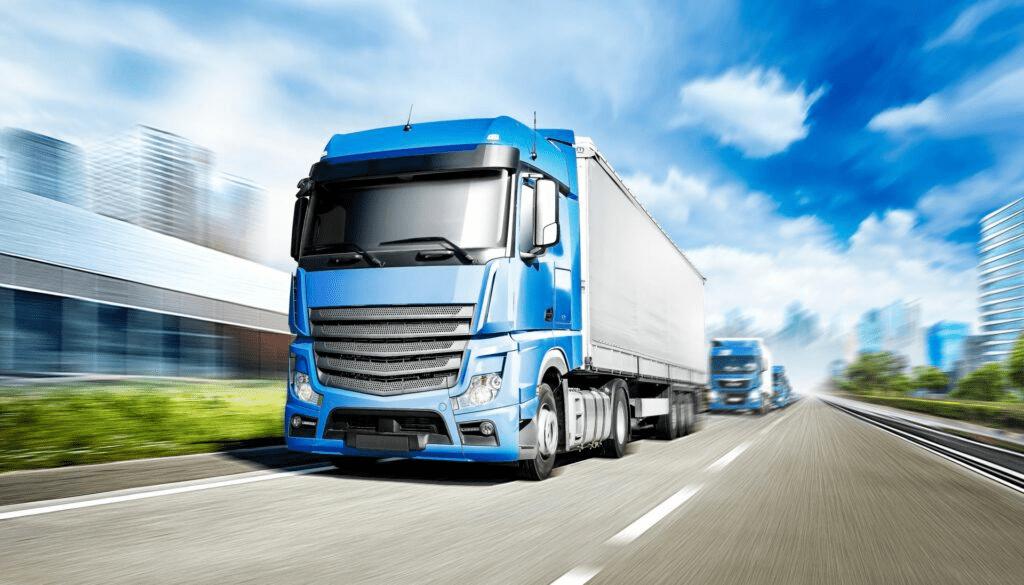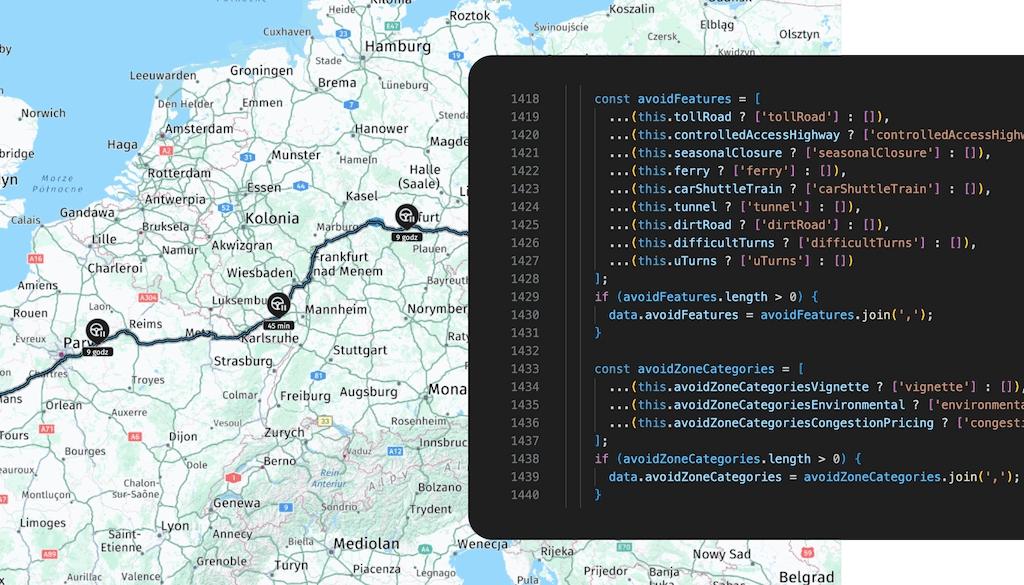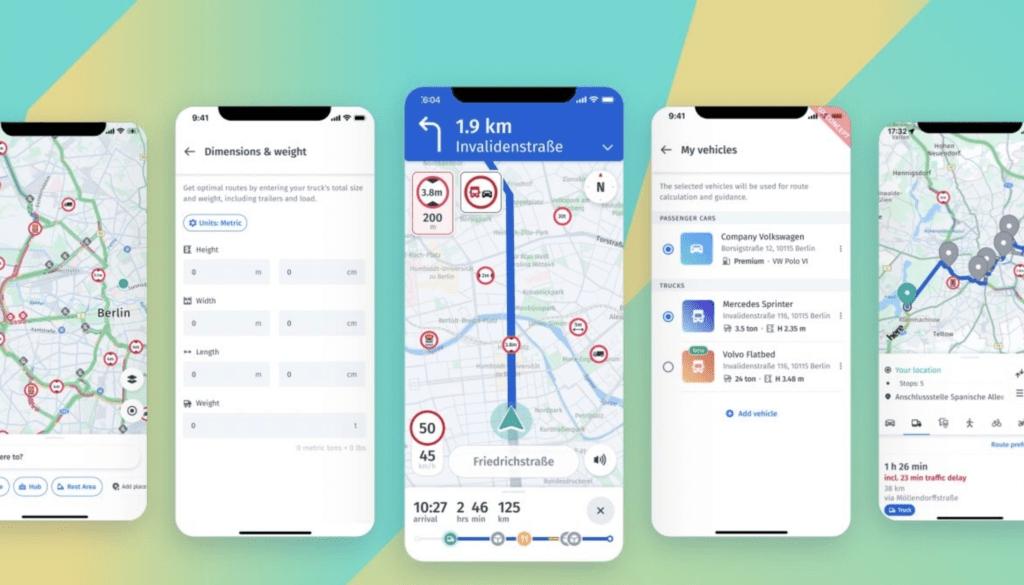16 Oct

Fuel costs are one of the biggest challenges in the transport industry. Prices keep rising, routes are getting longer, and every minute spent in traffic translates into real financial loss.
That’s why more and more companies are turning to artificial intelligence (AI) for route planning and fleet management.
This technology can reduce fuel consumption by up to 20% — without cutting down on the number of deliveries.
A Shift in Mindset – From Static to Dynamic Route Planning
In the past, routes were planned once a day — based on maps and driver experience.
Today, intelligent systems do it for us, analyzing real-time data such as traffic conditions, weather, roadworks, and even driver availability.
AI doesn’t just plan the route — it continuously optimizes it whenever congestion, accidents, or other disruptions occur.As a result, fleets avoid situations where drivers waste valuable time and fuel in traffic simply because “that’s the way it’s always been done.”
How AI Helps Reduce Fuel Consumption
Fuel savings are achieved through a combination of smart, interconnected mechanisms that work together to make every route more efficient:
1. Driving Behavior Analysis
The system learns how each driver operates — who accelerates too aggressively, who brakes too often, and where unnecessary idling occurs.
With this data, companies can conduct driver training and coaching based on real insights, not assumptions.
In many cases, this alone can reduce fuel consumption by 10–15%.
2. Dynamic Route Planning
AI designs routes to minimize empty mileage and determine the most fuel-efficient order of deliveries.
Even a small change in delivery sequence can lead to significant savings — especially for larger fleets, where every kilometer counts.
3. Vehicle Type Consideration
For mixed fleets — both combustion and electric — the system assigns tasks based on range, load, terrain, and temperature.
This ensures that electric vehicles aren’t overused on energy-intensive routes, while combustion vehicles are deployed where they make the most sense.
4. Historical Data Analysis
Every trip generates valuable data that AI uses to learn and improve.
Over time, the system can predict the most efficient combinations of routes, times of day, and vehicle types to maximize overall fuel efficiency.
Real Results in Numbers
Companies that have implemented AI in their fleet management report:
- an average fuel reduction of 15–20%,
- shorter delivery times by 10–15%,
- up to 50% fewer delays and idle times, and
- higher driver satisfaction, thanks to precise navigation guidance and reduced stress on the road.
These results show that AI doesn’t just save fuel — it also improves driver comfort, operational efficiency, and the overall quality of customer service.
How to Implement AI Route Optimization in Your Fleet — Step by Step
| Step | Actions | What You Gain |
| 1. Current State Audit | Collect data on routes, fuel consumption, driving behavior, and delivery delays. | Identify weak points and inefficiencies in your current routing plans. |
| 2. Data Integration | Connect GPS / telematics systems, weather data, road maps, and historical records. | Build a comprehensive data source for AI analysis and optimization. |
| 3. AI Testing on a Pilot Group | Run AI-based route optimization for a few vehicles or test routes. | Observe savings, detect issues, and fine-tune parameters before scaling. |
| 4. Scaling and Production Deployment | Apply AI optimization across your entire fleet. | Achieve full operational and cost-saving benefits. |
| 5. Monitoring and Adaptation | Analyze results, refine algorithms, and coach drivers for ongoing improvement. | Continuous enhancement and sustained performance gains. |
It’s also crucial that your system supports dynamic rerouting — real-time route adjustments in response to changing road or traffic conditions.
Key Challenges and Limitations
- AI can deliver excellent results — but only when it has access to high-quality data. Poor or incomplete telematics, mapping, or road data can significantly reduce optimization accuracy and overall performance.
- In mixed fleets (EV + combustion), models must account for the different characteristics of each powertrain. Oversimplified algorithms may lead to inefficient or even incorrect routing decisions.
- Regulatory changes, local restrictions, and temporary disruptions such as roadworks require AI systems to be adaptable and continuously updated to reflect new conditions.
- Finally, there’s the human factor — organizational culture. Drivers may initially be skeptical of AI-generated suggestions. Effective coaching, communication, and education are essential to ensure smooth adoption and lasting results.
Summary and Recommendations
Artificial intelligence in transport is no longer the future — it’s the present.
Thanks to AI, fleets are becoming more profitable, sustainable, and predictable. The technology analyzes thousands of data points every second to help companies:
- reduce operational expenses,
- improve delivery punctuality,
- optimize vehicle utilization, and
- enhance customer satisfaction.
Using AI for route planning is one of the simplest and most effective ways to reduce fuel costs.
You don’t have to revolutionize your entire fleet overnight — start with data analysis and gradually implement AI-driven solutions.
Every liter of fuel saved makes a tangible difference to your bottom line.
And the sooner you begin adopting intelligent route optimization, the faster your company will see real, measurable results.
Placematic as a trusted Partner
Placematic is a certified HERE Gold Partner, trusted by enterprises worldwide for delivering high-quality HERE solutions. In addition, our team combines deep technical expertise with hands-on experience to help businesses in logistics, mobility, retail, and real estate successfully adopt and integrate HERE Maps and Location Services.
Related Post
Archives
Categories

Placematic USA LLC
1139 N Arlington Heights Rd 120
Itasca, IL 60143
Placematic sp. z o.o.
Wita Stwosza 48/105
02-661 Warsaw



Recent Comments